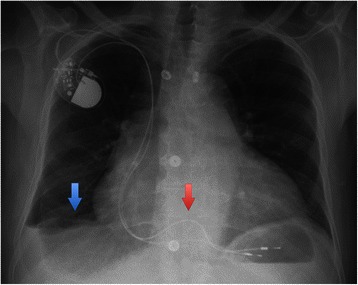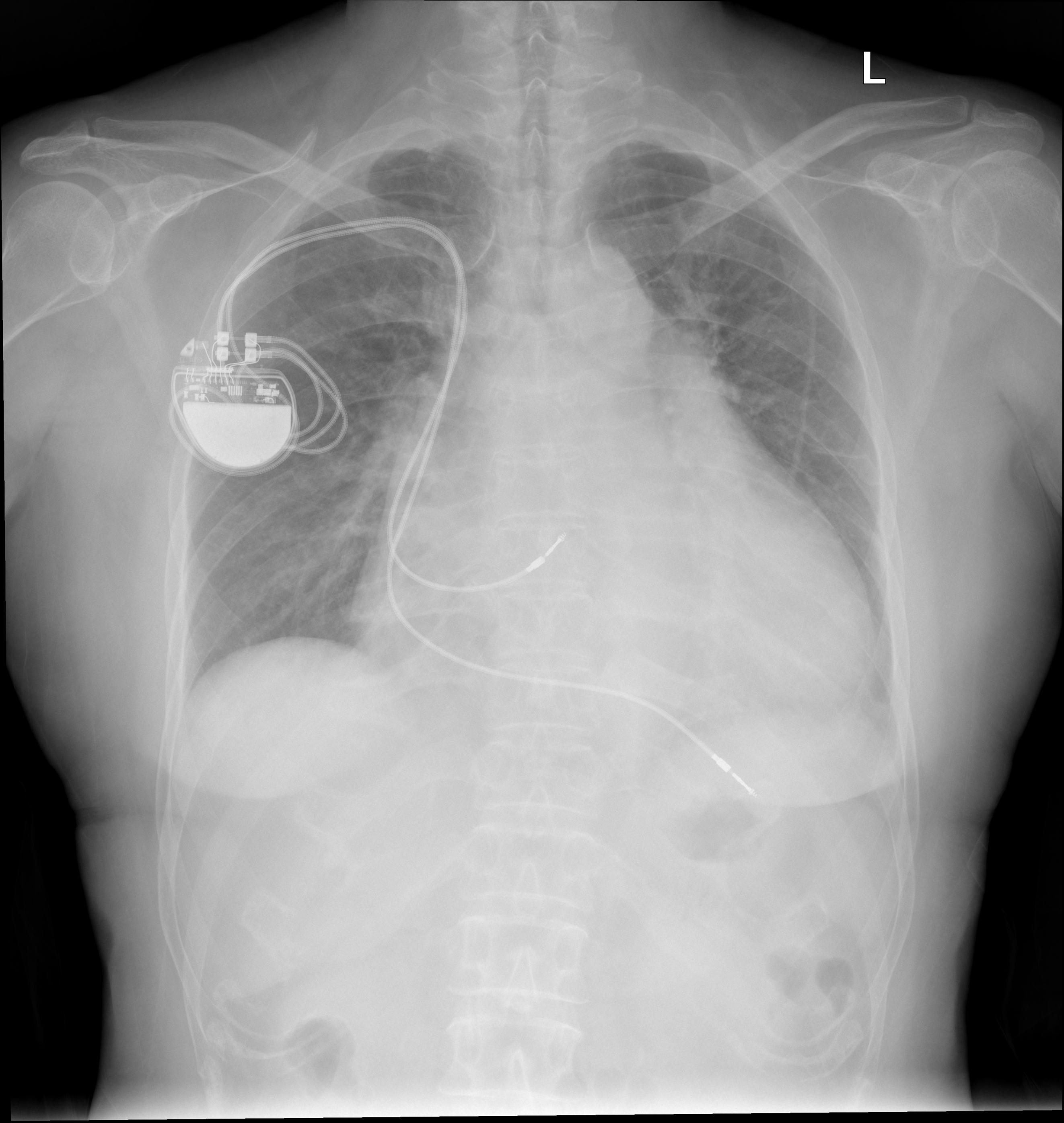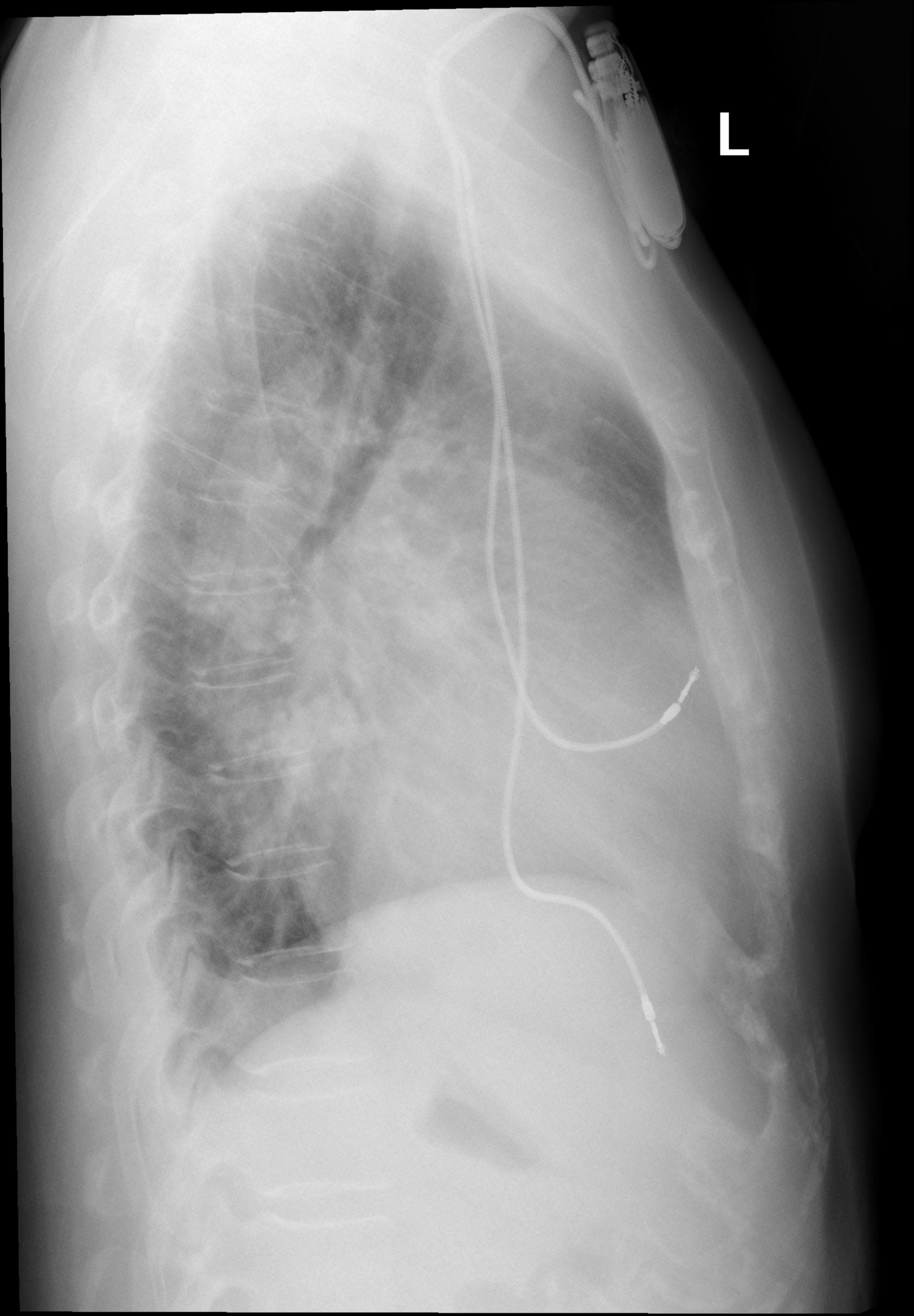Tricuspid regurgitation chest x ray
|
Tricuspid Regurgitation Microchapters |
|
Diagnosis |
|---|
|
Treatment |
|
Case Studies |
|
Tricuspid regurgitation chest x ray On the Web |
|
American Roentgen Ray Society Images of Tricuspid regurgitation chest x ray |
|
Risk calculators and risk factors for Tricuspid regurgitation chest x ray |
Editor-In-Chief: C. Michael Gibson, M.S., M.D. [1] ; Associate Editor(s)-in-Chief: Vamsikrishna Gunnam M.B.B.S [2] ; Rim Halaby, M.D. [3] ; Fatimo Biobaku M.B.B.S [4]
Overview
An chest x-ray may be helpful in the diagnosis of tricuspid regurgitation during the initial evaluation as well as during follow-up among adolescent and young adult patients. Findings on an x-ray suggestive of tricuspid regurgitation include cardiomegaly, prominent cardiac silhouette, right atrial enlargement and pleural effusion.
X ray
An chest x-ray may be helpful in the diagnosis of tricuspid regurgitation. Findings on an chest x-ray suggestive tricuspid regurgitation include:[1]
- Cardiomegaly can be noticed when the tricuspid regurgitation is severe due to right ventricle enlargement
- Cardiac silhouette can be noticed on the right in the x-ray along with the pulmonary artery view
- Right atrial enlargement can be noticed
- A view of azygos vein can be seen when the pressure is elevated in the right atrium
- Pleural effusions can be noticed
- An upward displacement of the diaphragm can be noticed due to ascites
- Prominent right and left pulmonary artery hilar segments can be noticed on the x-ray
2008 ACC/AHA Guidelines for the Management of Patients with Valvular Heart Disease - Evaluation of Tricuspid Valve Disease in Adolescents and Young Adults (DO NOT EDIT)[2]
| Class I |
| "1. Chest X-ray is indicated for the initial evaluation of adolescent and young adult patients with TR, and serially every 1 to 3 years, depending on severity. (Level C)" |



References
- ↑ Tornos Mas P, Rodríguez-Palomares JF, Antunes MJ (2015). "Secondary tricuspid valve regurgitation: a forgotten entity". Heart. 101 (22): 1840–8. doi:10.1136/heartjnl-2014-307252. PMC 4680164. PMID 26503944.
- ↑ Bonow RO, Carabello BA, Chatterjee K; et al. (2008). "2008 Focused update incorporated into the ACC/AHA 2006 guidelines for the management of patients with valvular heart disease: a report of the American College of Cardiology/American Heart Association Task Force on Practice Guidelines (Writing Committee to Revise the 1998 Guidelines for the Management of Patients With Valvular Heart Disease): endorsed by the Society of Cardiovascular Anesthesiologists, Society for Cardiovascular Angiography and Interventions, and Society of Thoracic Surgeons". Circulation. 118 (15): e523–661. doi:10.1161/CIRCULATIONAHA.108.190748. PMID 18820172. Unknown parameter
|month=ignored (help) - ↑ "Case report: Pacemaker lead perforation of a papillary muscle inducing severe tricuspid regurgitation".